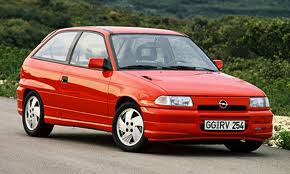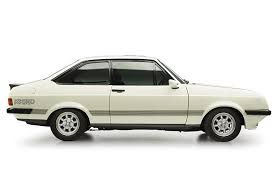A brief history of
Mitsubishi
Introduction
The car manufacturer Mitsubishi has made an important impact on the automotive world. In this article we will give a brief but detailed history of the Mitsubishi marque.
We will look at the origins of Mitsubishi looking at who, why, where and when Mitsubishi was founded. We'll look at the design of the iconic Mitsubishi logo and what are some the more significant Mitsubishi models.
We'll take a glance at what racing history the Mitsubishi has and who some of the most important people have been in the history of Mitsubishi over the years.
Who, where, when and why was
Mitsubishi founded?
Mitsubishi, a renowned Japanese car manufacturer, was founded in 1870 by Yataro Iwasaki. The company traces its roots back to the establishment of a shipping company called Tsukumo Shokai, which later expanded into various industries, including mining, shipbuilding, and eventually automobile manufacturing. The founding of Mitsubishi marked the beginning of a journey that would lead to the company becoming one of Japan's most influential automotive brands.
The origins of Mitsubishi can be traced to the city of Osaka, Japan. Yataro Iwasaki, an entrepreneur with a vision for growth and diversification, established the company with the goal of contributing to Japan's modernization and economic development. The name "Mitsubishi" itself translates to "three diamonds," symbolizing the three-leaf crest of the Iwasaki family, which represented reliability, integrity, and success.
Initially, Mitsubishi focused on various industries such as shipping and mining, leveraging its expertise in these fields to expand its operations. It wasn't until 1917 that Mitsubishi entered the automotive industry, marking the birth of Mitsubishi Motors Corporation. The decision to venture into automobile manufacturing was driven by Mitsubishi's desire to further diversify its portfolio and capitalize on the growing demand for automobiles in Japan.
Mitsubishi's foray into the automotive sector gained momentum with the production of its first passenger car, the Model-A, in 1917. This milestone marked the beginning of Mitsubishi's journey as a car manufacturer. The Model-A was a breakthrough for the company, as it was Japan's first mass-produced passenger car, designed to meet the needs of Japanese consumers.
Mitsubishi's commitment to innovation and technology became evident in the subsequent years. The company focused on developing advanced technologies and engineering capabilities, leading to the production of several notable models. In the 1960s, Mitsubishi introduced the iconic Mitsubishi 500, a compact car that captured the attention of consumers with its stylish design and fuel efficiency. This marked the beginning of Mitsubishi's global expansion, with the company exporting vehicles to international markets.
Throughout its history, Mitsubishi continued to evolve and innovate. The company established a reputation for producing reliable and durable vehicles, particularly in the sport utility vehicle (SUV) segment. In the 1980s, Mitsubishi introduced the Mitsubishi Pajero, a rugged and capable SUV that gained popularity worldwide. The Pajero's success solidified Mitsubishi's position as a leading SUV manufacturer and opened doors to new markets.
Mitsubishi's commitment to environmental sustainability and technological advancements is exemplified by its development of electric vehicles. In 2009, the company introduced the Mitsubishi i-MiEV, an all-electric vehicle that pioneered the mass production of electric cars in Japan. This demonstrated Mitsubishi's dedication to addressing the global environmental challenges and embracing the future of mobility.
Mitsubishi's history is a testament to its pioneering spirit, commitment to innovation, and dedication to delivering vehicles that meet the evolving needs of consumers. The company's journey from its humble beginnings as a shipping company to becoming a prominent player in the automotive industry reflects Mitsubishi's resilience, adaptability, and unwavering pursuit of excellence.
Today, Mitsubishi continues to produce a wide range of vehicles, including sedans, SUVs, and electric vehicles, catering to diverse markets worldwide. The company's rich history, combined with its commitment to technological advancements and sustainability, positions Mitsubishi as a respected and influential player in the global automotive industry.
How did the
Mitsubishi logo originate?

How did the Mitsubishi logo originate?
The logo of Mitsubishi, the renowned Japanese car manufacturer, has evolved over the years, reflecting the company's growth, values, and visual identity. The iconic logo represents the brand's commitment to innovation, excellence, and reliability.
The history of the Mitsubishi logo dates back to the late 1800s when the company was established. The original logo featured three diamonds arranged in a triangular formation, symbolizing the three-leaf crest of the Iwasaki family, the founders of Mitsubishi. These three diamonds represented reliability, integrity, and success, which became the guiding principles for the brand. The simple yet distinctive design of the logo embodied Mitsubishi's vision for excellence and its commitment to delivering high-quality products.
Over time, the Mitsubishi logo underwent subtle modifications to reflect the changing visual trends and brand identity. In the early years, the logo featured stylized diamonds with sharp edges and a bold design. As the company expanded and diversified its operations, the logo evolved to a more refined and contemporary look. The edges of the diamonds became softer, and the overall design became more streamlined.
In the late 1990s, Mitsubishi introduced a significant update to its logo, known as the "Dynamic Square." This new logo retained the three diamonds but incorporated a dynamic, three-dimensional perspective, giving the logo a sense of depth and movement. The bold and modern design reflected Mitsubishi's forward-thinking approach and its commitment to embracing technology and innovation.
In recent years, Mitsubishi further refined its logo to align with its global positioning and visual identity. The current logo features a simplified and more minimalist design. The three diamonds are still present but are rendered in a sleek and elegant manner, with cleaner lines and a contemporary aesthetic. This evolution of the logo represents Mitsubishi's commitment to modernity, sophistication, and adaptability in an ever-changing automotive landscape.
The Mitsubishi logo, with its recognizable three diamonds, has become a symbol of the brand's heritage, quality, and innovation. Through its subtle transformations, the logo has evolved alongside Mitsubishi's journey, reflecting the company's growth, values, and commitment to delivering exceptional vehicles to customers worldwide.
What are some of the significant
Mitsubishi models?
Mitsubishi, a prominent automotive manufacturer, has produced several significant models throughout its history, showcasing the brand's engineering excellence, innovation, and commitment to meeting the diverse needs of consumers. From the early years to the present day, Mitsubishi has introduced vehicles that have made a lasting impact on the automotive industry.
One of Mitsubishi's notable models from the early years is the Mitsubishi Model A, introduced in 1917. This vehicle marked Mitsubishi's foray into automobile manufacturing and became Japan's first mass-produced passenger car. The Model A featured advanced engineering for its time, with a robust chassis, a powerful engine, and a spacious interior. This pioneering model laid the foundation for Mitsubishi's future success in the automotive industry and demonstrated the brand's commitment to innovation and quality.
In the 1960s, Mitsubishi introduced the iconic Mitsubishi 500, a compact car that captured the attention of consumers. The Mitsubishi 500 featured a stylish design, exceptional fuel efficiency, and reliable performance. This model symbolized Mitsubishi's global expansion, as the company began exporting vehicles to international markets. The Mitsubishi 500 showcased the brand's ability to produce compact yet capable cars that appealed to a wide range of consumers.
In the 1980s, Mitsubishi made a significant impact with the introduction of the Mitsubishi Pajero. The Pajero, a rugged and versatile sport utility vehicle (SUV), gained popularity worldwide for its off-road capabilities and durability. The Pajero became synonymous with adventure and exploration, showcasing Mitsubishi's commitment to producing reliable and capable SUVs. Its success in off-road competitions further solidified Mitsubishi's reputation in the SUV segment.
In recent years, Mitsubishi has focused on producing electric and hybrid vehicles in line with the global shift towards sustainability. One of the notable models in this category is the Mitsubishi Outlander PHEV, a plug-in hybrid SUV. The Outlander PHEV combines efficient gasoline-electric hybrid technology with practicality and versatility. It has become one of the best-selling plug-in hybrid vehicles globally, showcasing Mitsubishi's commitment to environmental stewardship and the advancement of alternative powertrain technologies.
Another significant model from Mitsubishi is the Mitsubishi Lancer Evolution, often referred to as the "Evo." This high-performance sports sedan gained a cult following among automotive enthusiasts due to its exceptional handling, powerful engines, and rally-inspired design. The Lancer Evolution showcased Mitsubishi's engineering prowess and motorsport heritage, with multiple generations of the model achieving success in rally competitions and winning the hearts of performance car enthusiasts.
Additionally, the Mitsubishi Eclipse holds a special place in the brand's history. The Eclipse, a stylish and sporty coupe, became a symbol of Mitsubishi's commitment to design and performance. Its sleek lines, powerful engines, and accessible price point appealed to a wide audience. The Eclipse represented Mitsubishi's ability to deliver a blend of style, performance, and affordability in a sporty package.
These models represent a fraction of Mitsubishi's extensive lineup, each making a significant impact in their respective eras. From the early pioneering days to the present, Mitsubishi has consistently delivered vehicles that combine innovation, reliability, and versatility. The brand's commitment to meeting consumer needs, embracing technological advancements, and catering to various segments of the market has ensured its enduring presence in the automotive industry.
Mitsubishi's most significant models reflect the brand's dedication to engineering excellence, design innovation, and meeting the evolving demands of consumers. Whether through pioneering passenger cars, iconic SUVs, or environmentally friendly vehicles, Mitsubishi has left a lasting impression in the automotive landscape.

One of Mitsubishi's Most Iconic Models
Who are some of the most important people in
Mitsubishi's History
Mitsubishi's journey and success as an automotive manufacturer have been influenced by a number of remarkable individuals who have played significant roles in shaping the brand's direction, innovation, and reputation. These individuals have contributed their expertise, passion, and vision, leaving a lasting impact on Mitsubishi's legacy.
One of the notable figures in Mitsubishi's history is Yanase Masatoshi. As an influential entrepreneur, Masatoshi played a pivotal role in establishing Mitsubishi's presence in the automotive industry. In the early 1900s, he recognized the potential of automobiles and formed a partnership with Mitsubishi to import and sell automobiles in Japan. Masatoshi's vision and business acumen helped Mitsubishi establish a strong foundation in the automotive market and laid the groundwork for the company's future success.
Another key figure in Mitsubishi's history is Osamu Masuko, who served as the CEO of Mitsubishi Motors Corporation from 2005 to 2019. Under Masuko's leadership, Mitsubishi went through a period of transformation and growth. He spearheaded initiatives to streamline operations, improve efficiency, and enhance product development. Masuko's strategic decisions played a crucial role in Mitsubishi's resurgence and helped the company navigate through challenging times. His emphasis on electric and hybrid vehicles paved the way for Mitsubishi's commitment to sustainability and its position as a leader in the development of eco-friendly automobiles.
Erik Gustavson, a renowned automotive engineer, is another significant individual associated with Mitsubishi. Gustavson played a pivotal role in the development of Mitsubishi's groundbreaking technologies, particularly in the area of electric and hybrid vehicles. His contributions to the development of the Mitsubishi i-MiEV, the brand's first mass-produced electric car, showcased his expertise and commitment to advancing sustainable mobility. Gustavson's innovative engineering solutions helped Mitsubishi establish itself as a leader in the electric vehicle market.
Additionally, Tommi Mäkinen, a legendary rally driver, made a significant impact on Mitsubishi's motorsport legacy. Mäkinen joined Mitsubishi's rally team in the 1990s and went on to achieve remarkable success, winning four consecutive World Rally Championships with Mitsubishi. His exceptional driving skills, determination, and technical feedback played a crucial role in the development of Mitsubishi's rally cars and elevated the brand's reputation in the motorsport arena. Mäkinen's achievements contributed to Mitsubishi's rich motorsport heritage and solidified its position as a force to be reckoned with in rally racing.
Furthermore, Tetsuro Aikawa, who served as the President and COO of Mitsubishi Motors Corporation, made significant contributions to the company's growth and innovation. Aikawa was instrumental in implementing various initiatives aimed at strengthening Mitsubishi's product lineup, improving quality, and expanding the brand's global presence. His leadership played a vital role in Mitsubishi's development of advanced technologies and the introduction of new models, including the highly successful Mitsubishi Outlander PHEV.
These individuals, among many others, have left a profound mark on Mitsubishi's history and success. Their vision, leadership, technical expertise, and commitment to excellence have shaped the brand's trajectory, enabling Mitsubishi to establish itself as a prominent player in the automotive industry. Through their contributions, Mitsubishi has been able to deliver innovative vehicles, push technological boundaries, and meet the evolving needs of consumers worldwide.
Today, their legacy lives on as Mitsubishi continues to innovate, adapt to changing market demands, and develop vehicles that embody the brand's core values of reliability, performance, and sustainability. The collective efforts and achievements of these significant individuals have shaped Mitsubishi's identity and laid the foundation for the brand's ongoing success.

One of the most influential people in the history of Mitsubishi
Mitsubishi's Racing History
Mitsubishi's racing history is rich with achievements and notable moments, showcasing the brand's commitment to motorsport and its ability to compete at the highest level. From rally championships to endurance races, Mitsubishi has left an indelible mark on the racing world.
One of the most significant chapters in Mitsubishi's racing history is its dominance in the World Rally Championship (WRC) during the 1990s. Mitsubishi's rally team, led by drivers such as Tommi Mäkinen and Richard Burns, achieved remarkable success, securing multiple championships and establishing Mitsubishi as a force to be reckoned with in the rally world. Mäkinen's four consecutive WRC titles from 1996 to 1999, all achieved behind the wheel of a Mitsubishi Lancer Evolution, showcased the brand's engineering excellence and motorsport prowess. Mitsubishi's success in rallying not only elevated its reputation but also helped develop technologies that would later find their way into its production vehicles.
In addition to its achievements in rally racing, Mitsubishi also made its mark in endurance racing. The brand participated in renowned events such as the Dakar Rally, an arduous off-road race known for its challenging terrains. Mitsubishi's Pajero and Montero models became synonymous with the Dakar Rally, with numerous victories in the grueling event. The Pajero's outstanding performance and reliability in off-road conditions made it a formidable contender, earning Mitsubishi multiple overall victories in the prestigious race. These successes solidified Mitsubishi's reputation as a manufacturer of durable and capable vehicles, demonstrating the brand's commitment to engineering vehicles that excel in extreme conditions.
Moreover, Mitsubishi's racing endeavors extended beyond rally and endurance events. The brand also had a notable presence in touring car championships around the world. In Japan, Mitsubishi's racing division, Ralliart, developed high-performance versions of its production models to compete in the Super Taikyu and Super GT championships. These modified vehicles, such as the Mitsubishi Lancer Evolution and the Mitsubishi Galant VR-4, showcased the brand's dedication to performance and precision engineering. Mitsubishi's participation in touring car championships not only bolstered its racing pedigree but also helped to refine its road-going models, bringing the excitement of motorsport to the everyday driver.
Mitsubishi's commitment to racing extends beyond professional circuits, as the brand has also supported grassroots motorsport initiatives. The Mitsubishi Lancer Evolution became a popular choice among amateur racers, thanks to its exceptional performance and affordability. The brand's support of motorsport enthusiasts and the development of competitive platforms contributed to the growth of Mitsubishi's racing community and fostered a dedicated following for its performance models.
While Mitsubishi's official factory-backed racing activities have diminished in recent years, the brand's legacy in motorsport continues to inspire enthusiasts and serve as a testament to its racing heritage. Mitsubishi's successes in rally championships, endurance races, and touring car competitions have left an enduring impact on the brand's identity and contributed to its reputation for performance and reliability. The spirit of competition and the pursuit of excellence in racing have shaped Mitsubishi's engineering philosophy and have played a crucial role in the development of its road cars.
Today, Mitsubishi's racing legacy lives on in the hearts of motorsport enthusiasts and in the iconic performance models that bear the brand's name. The lessons learned on the track continue to influence Mitsubishi's production vehicles, ensuring that the thrill of racing and the pursuit of performance are woven into the fabric of the brand.
Summary
Mitsubishi, a renowned Japanese automotive manufacturer, has left an indelible mark on the industry with its commitment to innovation, engineering excellence, and motorsport heritage. From its humble beginnings as a shipbuilding company to becoming a global automotive powerhouse, Mitsubishi has continuously evolved and adapted to meet the changing needs of consumers.
The brand's rich history is characterized by iconic models, technological advancements, and a strong presence in motorsport. Mitsubishi's legacy includes remarkable achievements in rally racing, where the brand dominated the World Rally Championship with the legendary Mitsubishi Lancer Evolution and iconic drivers like Tommi Mäkinen. Additionally, Mitsubishi's success in endurance racing, particularly in events like the Dakar Rally, showcased the brand's durability and off-road capabilities.
Beyond racing, Mitsubishi has continuously pushed the boundaries of innovation, particularly in the realm of electric and hybrid vehicles. The Mitsubishi i-MiEV, the brand's first mass-produced electric car, demonstrated Mitsubishi's commitment to sustainable mobility and positioned the company as a leader in electric vehicle technology. Furthermore, Mitsubishi's line-up of SUVs, such as the Mitsubishi Outlander and Mitsubishi Pajero, has garnered a reputation for reliability, performance, and versatility.
With a focus on engineering excellence, Mitsubishi has established itself as a trusted name in the automotive industry. The brand's dedication to innovation, quality, and performance has created a loyal following of enthusiasts and customers who appreciate Mitsubishi's heritage and the vehicles it produces. As Mitsubishi continues to navigate the ever-changing landscape of the automotive world, it remains committed to delivering reliable, technologically advanced, and environmentally conscious vehicles that meet the needs and aspirations of drivers around the globe.
View Mitsubishi Car Specifications
More Manufacturer Histories.

























